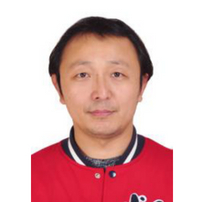
Joung Sook Hong
Seoul National University, Korea
Title: Toughness enhancement of pla/natural rubber blend by melt compounding with clays
Biography
Joung-Sook Hong received the B.S. degree in chemical engineering from Jeju National University, Jeju, Korea, in 1995, and the M.S. and Ph.D. degrees in chemical engineering from the Seoul National University, Seoul, Korea, in 1997 and 2005, respectively. She was a Research Associate at the University of Queensland in 2006, a Research Assistant Professor at Korea University in 2007, a Senior Researcher at Research Center, Samsung Cheil Industry, in 2008-2009, and an Assistant Professor in the Department of Chemical Engineering, Soongsil University, in 2009 through 2015. She is currently a Research Professor in the Center for nano-structured polymer processing technology, Seoul National University. Her current interests include the dispersion of particles in a non-Newtonian fluid and emulsion, interfacial rheology, microfluidics, and nanocomposite.
Abstract
Poly(lactic acid) (PLA) is an aliphatic polyester that possesses various advantageous physical and thermal properties compared to other commercial biopolymers. It is thermally stable and biodegradable which promises a great processability for industrial applications while its brittleness limits usages. In this study, natural rubber was added to PLA to make up brittleness of PLA. Depending on the distribution of the rubber phase and the compatibility between rubber and PLA, the brittleness is able to be limitedly improved. On the other hand, organically modified clays were added in order to induce compatibilization and to enhance mechanical properties. Clays were introduced to PLA/NR blend with a weight fractions, 0-10 wt%. With a small amount of clays, the size of the dispersed Natural rubber phase was effectively decreased to sub-micronsize which seems compatibilize between the matrix PLA and the rubber phase. Then, the extendibility was improved (Figure1). Furthermore, the content of natural rubber was varied from 10 to 50% to observe the toughening effect. Mechanical properties including tensile strength and elongation breakage, rheological properties including storage and loss modulus as well as morphology were observed.

Ana Paula Testa Pezzin
University of Joinville Region (UNIVILLE), Brazil
Title: Preparation and characterization of a bionanocomposite membranes with antibacterial properties composed by poly(l-lactic acid) and silver nanoparticles
Biography
Ana Paula Testa Pezzin graduated in Chemistry, Master in Chemical Engineering and PhD in Mechanical Engineering from the State University of Campinas. She did postdoctoral studies at the Université Pierre et Marie Curie in Paris / France. She has been a leader in the POLYMERIC MATERIALS GROUP since 2001, working in research lines: Polymeric biomaterials for medical and dental applications; Composites, biocomposites, nanocomposites and bionanocomposites; Modification of biopolymers for different applications and synthesis and characterization of biopolymers by microbial culture. Currently, she is a Professor and Researcher at the University of Joinville Region (UNIVILLE), being a level 2 productivity fellow at CNPq
Abstract
Statement of the Problem: The use of biopolymers in the medical area is extremely interesting for tissue engineering because they provide a favorable environment for the growth and differentiation of cells[1]. Among the distinct applications, one of significant interest is related to the odontological area. In this area, a problem of major concern is the periodontal disease. It consists in an infectious process characterized by damages in the periodontal tissues induced by bacteria present in the gingival sulcus[2]. Common treatments involve the use guided tissue regeneration (GTR) by using bioabsorbable membranes[3], but the commercially available membranes does not contain nanostructured antibacterial agents, such as silver nanoparticles. Methodology & Theoretical Orientation: In the present study, silver nanoparticles (AgNp) were synthesized in an aqueous media and transferred to an organic solvent by using a fatty amine as a phase transfer agent. Such solvent was used in different amounts with fresh solvent to prepare functionalized PLLA membranes. The AgNp were characterized by UV-Vis spectrophotometry and transmition electron microscopy (TEM). Atomic absorption spectroscopy (AAS) was used to quantify the amount of silver presented in the solvent used to produce the membranes. The membranes, functionalized with different concentrations of AgNp, were characterized by thermal gravimetric analysis (TGA), differential scanning calorimetry (DSC), field emission scanning electron microscopy (FESEM) and standardized antibacterial assays (ASTM E-2180). The degradation behavior of the membranes in artificial saliva was also investigated. Conclusion & Significance: The results revealed a reduction of the thermal stability and an increase of the crystallinity of the membranes by increasing the silver nanoparticles content. Moreover, the membranes containing concentrations of AgNp greater than 13 μg / g PLLA showed excellent antibacterial activity against the Gram positive bacteria Staphylococcus aureus. Such findings indicated that the produced antibacterial membranes have potential application in guided tissue regeneration treatments, such as in periodontal diseases.







